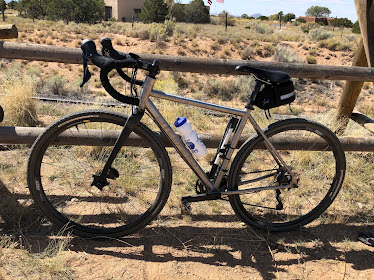I was wandering through the League of American Bicyclists web pages the other day looking to see if the little fall newsletter was there as a pdf file. In the process, I found this article:
Pedaling Toward a More Just BFA Program: Removing “Enforcement” from our Framework
Bicycle Friendly America
Equity
by Amelia Neptune
"As of this week, the League of American Bicyclists has officially and
permanently removed ‘Enforcement’ as one of the pillars of the Bicycle
Friendly America program’s ‘5 E’ framework."
I sent this email to Bill Nesper and Ken McLeod
"Of course (in the process of looking for something else), I got to reading other stuff, including the League of American Bicyclists decision removing Enforcement from the E's. I have mixed thoughts on that, having seen the good, the bad, and the ugly. I have read Radly Balco and other authors who point out the problems with racial disparities and prejudice in enforcement, policing for profit and how that targets marginalized communities, and of course the grotesque happenings of this year. Clearly, enforcement has not been seeing, as Churchill would say, its finest hour.
Enforcement pales in comparison to planning and design in controlling traffic and traveling safety, as we in the League and folks like Strong Town's Chuck Marohn (copied) have pointed out with regards to designing roadway systems that beg to be misused and then railing at their misuse. It makes no sense, for example, to bring St. Francis Drive into north Santa Fe as a freeway and then rail at speeding. Well, the road begs to be used to speed.
But accountability matters. If we are squeamish about enforcement, we cannot be squeamish about holding both government and individuals accountable for their behavior. It must be done in a just and equitable way. My concern with your ideas about automated "enforcement" is that in most cities, automated enforcement goes over like a lead balloon. Often, private companies are tasked with camera enforcement and this reeks again of policing for profit.
If any of us had the answers to this, we would be famous. I think community efforts based on traffic and community justice (to reach back to a set of talks that Charlie Komanoff and I gave at Pro Bike/Pro Walk in 2006), designs and policies that encourage the behaviors we want to see rather than maximize throughput, and community policing by police who have won the confidence of their communities all have to be fit into solutions."
-------------------------------------------------------------------------------------------------------------------------
Some afterthoughts. This is a contentious issue and part of a far bigger civil rights issue than bicycling alone but since the League promotes cycling, we are talking about injustice related to bicycling/walking. If I were a Black or Latino kid in a city I'd probably write something different but that's just a reason for others to write about it too and the faces on the League Board and Staff certainly look more diverse than in previous decades. The high profile police misconduct we saw in incidents such the police killing of George Floyd, the rise of the Warrior Cop mentality, and the countless incidents of using police as revenue generators (which led in a straight line to the death of Philando Castile) have done enormous damage to police-civilian relationships and have put a dark pall of racism and violence over "enforcement".
Even if we redesign every road in America to Vision Zero standards, promote infill rather than stroad-worshipping sprawl, provide great connectivity for biking and walking, and ensure every inner city and every suburban "arterial and cul de sac" kid has a safe bike route to school and play (not to mention, good schools and playgrounds), there has to be accountability if we are to have both equity and safety for bicycling and walking. For example, anyone walking the streets of Santa Fe can see that its almost as common to see motorists with cell phones as steering wheels in their hands.
Finding ways of ultimately holding communities accountable for bad design as well as class based or racist policies, and holding accountable individual bad behavior cannot be overlooked, even if we take whiteout to one of the E's. The question is, how do we put the justice word back into the criminal justice system so everyone thinks they are covered by justice rather than having a knee on their neck, choking the life not only out of the individual but out of the community?
Interestingly, the Albuquerque Journal just weighed in on enforcement: Editorial: Its time for the APD to put the brakes on street racing.
And for every story like that there is one like this:
The Times identified 16 cases since 2005 where a stop for bike
violations in Los Angeles County resulted in a police shooting,
according to interviews and a review of public records from the district
attorney, coroner and various court cases. Most of the stops occurred
in communities made up largely of Black and Latino residents. In 11
incidents, including Kizzee’s, the bicyclists — all male and Black or
Latino — were killed.
Send your thoughts to the League on this. All this ugliness aside, who you gonna call when some speeding, texting meathead runs you down? A social worker?
This cartoon was a result of this story:


































